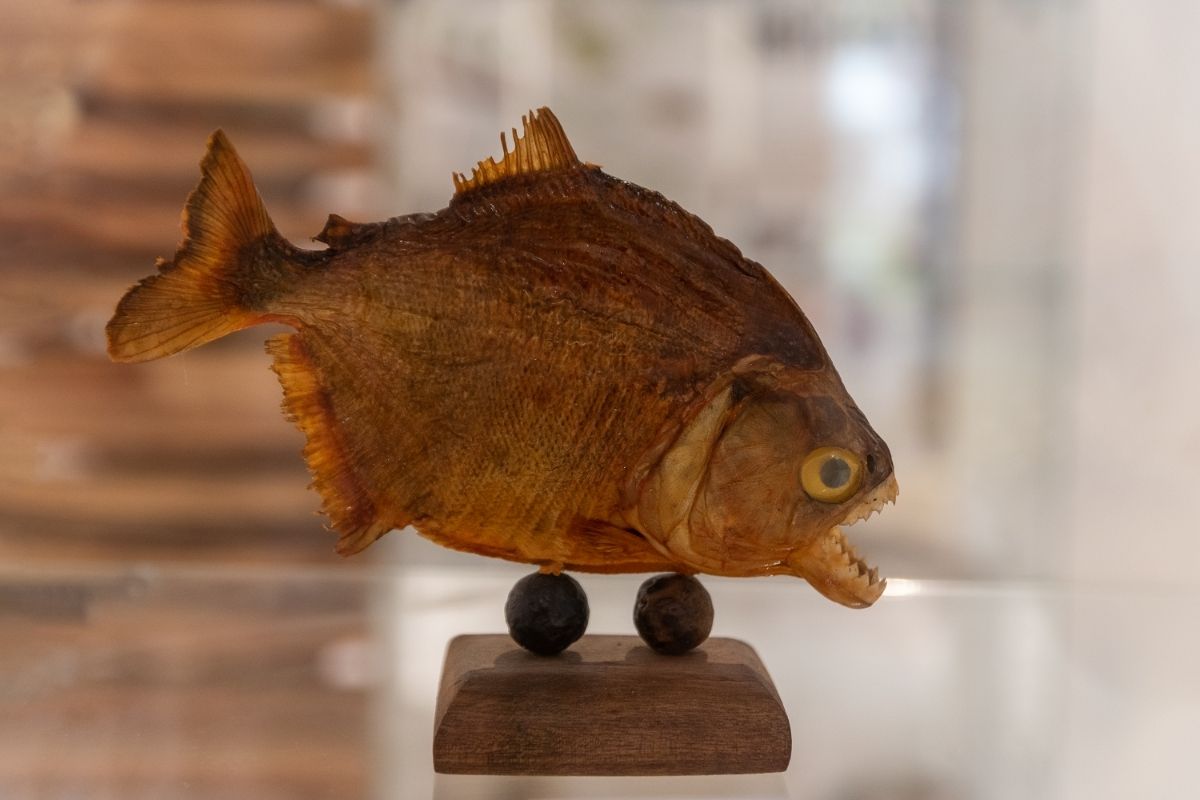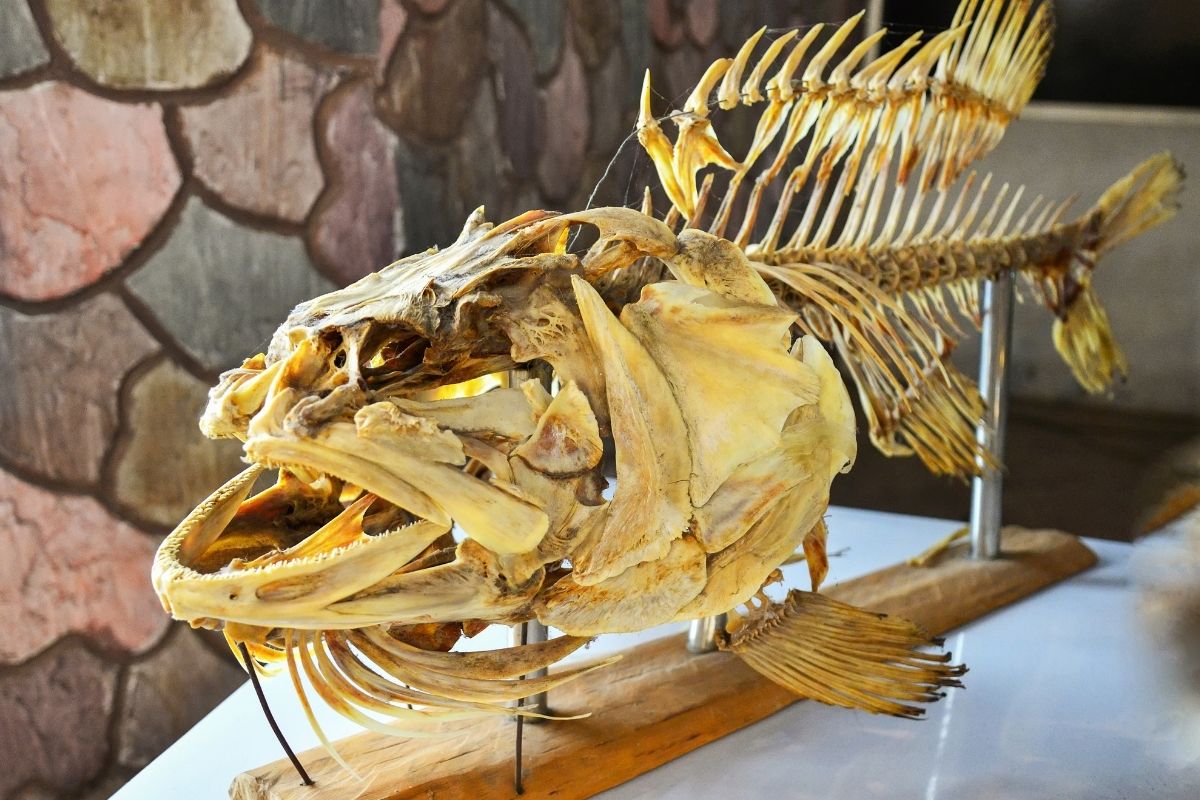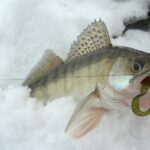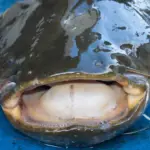Taxidermy is a method used worldwide to preserve an animal’s body.
Considered an art, it involves stuffing or mounting the animal with the purpose of putting it on display.

More often than not, animals are preserved so that they seem to be still alive.
In fishing, taxidermy is seen as an exciting way to preserve our most memorable catches.
Whether it be your first catch, your personal best, or a fish you’ve been trying to catch for many years, visiting a taxidermist could be on your agenda.
If it is, there’s a lot you need to know first. One of the most important, is how much does fish taxidermy cost?
The price you can expect to pay to have your catch taxidermied will vary depending on the taxidermist, species, size, and type of taxidermy you wish to be carried out.
While this may seem like a lot to learn, we’ll cover all of it in this article.
Be sure to stick around if you want to learn more!
How Much Does Fish Taxidermy Cost?
Let’s start by looking at the answer to the main question you came here looking for the answer to.
When they stuff a fish, taxidermists typically charge per inch of length.
Of course, the price per inch will then vary depending on how much that specific taxidermist charges.
The species of fish will also affect the price you pay. For example, having a bass stuffed might cost between $11 and $15 per inch, whilst having a striped bass stuffed might cost $15 and $20 per inch.
Despite prices varying, we can give you some general figures regarding the most popular catches.
If you were to catch bass, walleye, pike, trout, salmon, striped bass, or billfish, you could expect to pay between $11 and $20 per inch.
However, it is important to note that you could be quoted prices higher or lower than these figures. It is also important that you know taxidermists have a minimum charge.
As a result, your smaller fish might still cost the same as a larger catch.
How Does Fish Type Affect Costs?
How much you’ll have to pay for fish taxidermy also depends on the type of fish you plan on having stuffed.
When it comes to skin mounting, taxidermists usually classify fish into three groups. Those three groups are warm water fish, coldwater fish, and saltwater fish.
Generally speaking, saltwater and coldwater fish cost more to stuff than warm water fish. This is because their skin is normally more oily, which makes the taxidermy process take longer.
Warmwater fish includes most freshwater game, excluding salmonid species like salmon, char, and trout. These three are classified as coldwater fish.
Coldwater fish usually cost $14 to $18 per inch. Saltwater fish normally cost $15 to $20, and warmwater fish typically cost $11 to $15 per inch.
The Different Types Of Fish Taxidermy
When it comes to having your fish taxidermied, you have two methods to choose from. Those two methods are skin mounting and replica mounting.
Skin mounting is the more popular method, having been around for thousands of years. It is considered the most traditional form of taxidermy.
On the other hand, replica mounting is a modern alternative that seems to be growing more and more in popularity.
Your personal preferences will impact the method of taxidermy you decide to go with, so we’ve detailed both methods below!
Skin Mount Taxidermy
The more traditional method of fish taxidermy involves cutting the fish open and removing everything from inside the fish.
This includes the fish’s flesh, bones, and internal organs.
After that, the taxidermist is left with the skin, head, fins, and tail. The fish’s cheek meat and eyes are then removed from the head. All of this is done to prevent decomposition.
After removing all the necessary body parts, the skin, tail, fin, and head that remain are treated with various chemicals to eliminate decomposition.
The fish is then dried. This can take weeks or months. Once the fish is dry, it is wrapped around a foam mold, similar in shape and size to its original size.
The last steps include placing glass beads in the eye sockets and painting the fish lifelike colors.
Replica Taxidermy
Replica taxidermy doesn’t require any of the above procedures. Instead, replica taxidermy uses a mold to produce a fiberglass replica of your catch.
To do this, taxidermists use real fish to create a template mold for each species.
They then produce different size variations of the original mold so that they fit the measurements of the fish caught by the angler.
Once the fiberglass fish has been created, the taxidermist will add specific details.
This includes teeth, gills, and glass eyes. That step is followed by spray painting and any additional small details. After that, the replica mount should closely resemble the living fish.
The best thing about replica mounting is that the whole process doesn’t require your catch.
This gives those that prefer catch and release the opportunity to still have their catch taxidermied. All the taxidermist needs are several photos of the fish to give them a detailed idea of what the fish looked like.
Having said that, the method still works better when the taxidermist has the fish.

Which Method Is Better?
Ultimately, the method you decide to go with comes down to your thoughts and feelings regarding taxidermy.
However, if you’re struggling to make a decision, maybe we can help by giving you the advantages and disadvantages of both methods.
In recent years, replica fish mounts have become increasingly popular. In fact, traditional fish skin mounts aren’t regularly done anymore.
The main reason most anglers choose replica mounts instead is down to a number of key factors.
Arguably the most important of these is durability. Replica mounts are much more durable than skin mounts.
To make things even better, the taxidermist doesn’t need your catch.
Key measurements and photographs are all the taxidermist needs.
Your replica mount won’t deteriorate either. On the other hand, skin mounts will deteriorate over time. The fish’s skin will fade and shrink.
The fish may even leak oil. While you might be able to restore the fish again, the whole process can be frustrating.
Having said that, skin mounts do represent the realness of a memorable fishing experience. You can’t get this with replica mounts.
However, overall, we would have to say replica mounts are better.
How Do You Preserve Your Fish For Taxidermy?
If you’ve landed a trophy fish you want to preserve, it is important to follow the right procedures so that the taxidermist can effectively work with the fish.
Failure to do so can result in poor results and rotten fish. Before doing anything else, it is important to keep the show side of the fish up when storing it.
This is to avoid abrasion. The steps you’ll follow to preserve your catch depend on how you plan on having it taxidermied.
We’ve outlined the key steps to follow below:
Skin Taxidermy
- Rinse your fish
- Wrap it in a moist towel
- Place the towel-wrapped fish in a plastic bag
- Tape the bag shut
- Place the bag in a freezer (show side up)
- Keep your fish frozen for two days
- Send the frozen fish to your chosen taxidermist
Replica Taxidermy
- Measure the girth and length of your fish
- If possible, weigh your fish
- Take as many photos as you can
- Send the taxidermist all the information you have
Choosing The Right Taxidermist
Choosing the right taxidermist can be a tricky part of the process.
Not only do you need to find a taxidermist that creates high-quality, reliable mounts, but you also need to find one that offers the right price for you.
The easiest way to pick out a good taxidermist is to take a look at their most recent pieces of work.
You can do this by asking other anglers for recommendations, asking for examples of their work, and by checking out angling forums.
Personally, we believe the quality of work is more important than the price.
We’d rather pay $15 per inch for an amazing mount, rather than $8 for a shoddy piece of work.
Luckily, most taxidermists accept fish from all over the United States. Therefore, your options aren’t limited to where you live.
How Long Does It Take?
Once you’ve finally sent your fish to the taxidermist, the time it takes to get it back varies. Anywhere between 3 months and 1 year is pretty common with most taxidermists.
The time it takes will depend on the species of fish and their size. Of course, skin-mounted taxidermy also takes longer than replica taxidermy.
The longest part of the whole process is waiting for the fish to dry. This can take over 6 weeks for warmwater fish and much longer for salt and coldwater fish.
You will need patience when waiting for your fish but the results will be worth the wait.
Final Thoughts
Fish taxidermy is a wonderful way to preserve a trophy catch or memorable fish.
While prices vary depending on species, size, and taxidermist prices, you can expect to pay anywhere from $11 to $20 per inch of length to have your fish taxidermied.
In this article, we’ve not only shown you how much fish taxidermy costs, but we’ve also shown you the different methods you have to choose from, how to prepare your fish for taxidermy, and key things to consider when finding the best taxidermist.
All you have to do now is land the perfect fish and find the best taxidermist.
Whichever method you choose, we’re sure you’ll be happy with what you receive.
- Do You Need An Indicator For Nymph Fishing? - November 16, 2023
- Fishing Safety Tips For Families - September 25, 2023
- What Is The Best Time To Night Fish At A Lake? - September 18, 2023








![How To Use A Fish Stringer [Keep Your Catch Fresh] walleye-how-to-use-a-fish-stringer-1](https://irvinelake.net/wp-content/uploads/2022/12/walleye-how-to-use-a-fish-stringer-1-150x150.png)
